These days, seeing sunrise at Angkor Wat means jostling the crowds and dodging death by selfie-stick. However, it’s well worth it if you’re lucky enough to catch a beauty, with the sky plunging into a palette of color as the sun peaks from behind the iconic temple’s spires.
[rpi]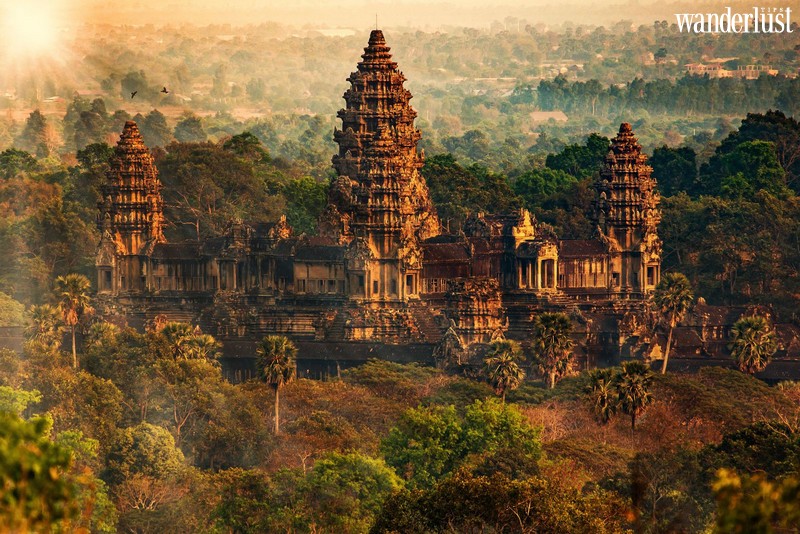
Angkor Wat is the prized temple and showpiece of what is now known as the Angkor Archaeological Park. The city of Angkor itself was built in the 12th century to be an unparalleled Khmer capital for King Suryavarman II. When built, the ancient city extended over 400 kilometers, which makes it the largest pre-industrial city in history. While guesses about the city’s population vary wildly, some prominent historians suggest that the population could have been as high as one million people. Mysteriously, archaeologists are still unsure of what actually happened to this vast empire and its people.
WHEN TO GO
As a tropical Southeast Asian destination, Angkor doesn’t experience four seasons but more of a pattern of dry and wet seasons. That being said, the temperature does vary throughout the area, going from mild and pleasant to hot and humid. Ultimately, the best time to visit Angkor is when it is both cool and dry which means the months of November through March. Naturally, this is also the peak of tourist season in Angkor Wat and Siem Reap so consider the time carefully if you’d want to avoid the crowds.
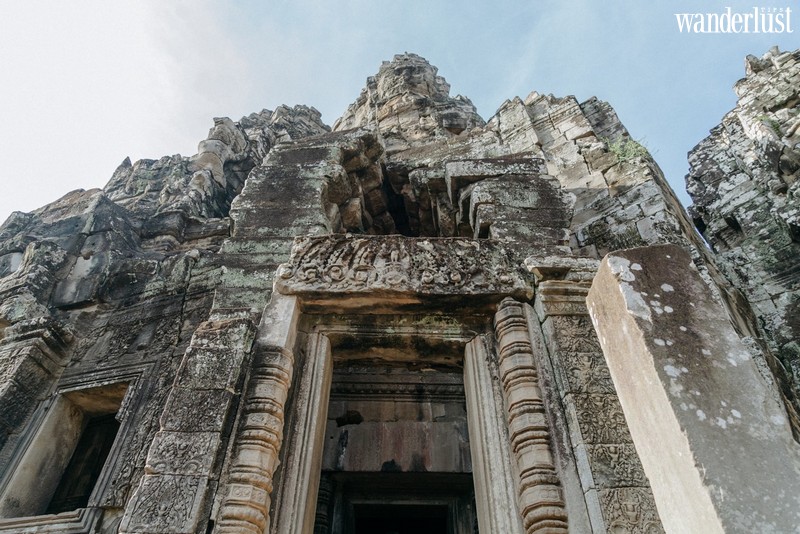
Outside of those months, you may have to deal with the heat, monsoon rains, or both. Angkor is at its hottest from April to June and sightseeing in the early afternoon can be draining, especially by bicycle. The heavy rains from May through October shift from sudden downpours to more constant rain as the months go on, which is also not the best conditions for sightseeing, especially on minor dirt roads. Coming out of peak season has its advantages though, from fewer tourists at the temples to more affordable room rates in Siem Reap.
HOW TO GET AROUND
By Tour Van
As the most comfortable means of seeing Angkor, sightseeing with a tour van is also the most expensive option. Sitting inside an air-conditioned van, you’ll comfortably get from Siem Reap to Angkor and then go from one temple to the next. As you go around, you’ll have a tour guide explaining the history behind each of the places you visit. Costs will vary depending on what is included and whether you choose a private or shared tour.
By Tuk Tuk
If transport is all you’re after then hiring a tuk-tuk for the day is a great way to see Angkor. The driver can take you from one temple to the next and wait around while you go see the temples. What’s more, you have the freedom to customize your visit to suit you as you go along. Sightseeing with a tuk-tuk offers a great balance between cost and convenience, and hiring one for the day should cost around $15-20 depending on your negotiation skills.
By Bicycle
If you prefer to be active as you sightsee, then you might want to consider renting a bicycle for the day. For a few dollars, you can pedal your way over to Angkor from Siem Reap and go about as you please along the flat roads. Although the cheapest option, it’s also the slowest and can be really tough when the weather is hot. Keep in mind too that cycling through traffic in Siem Reap after sunset is not advisable.
WHERE TO STAY
J7 Hotel
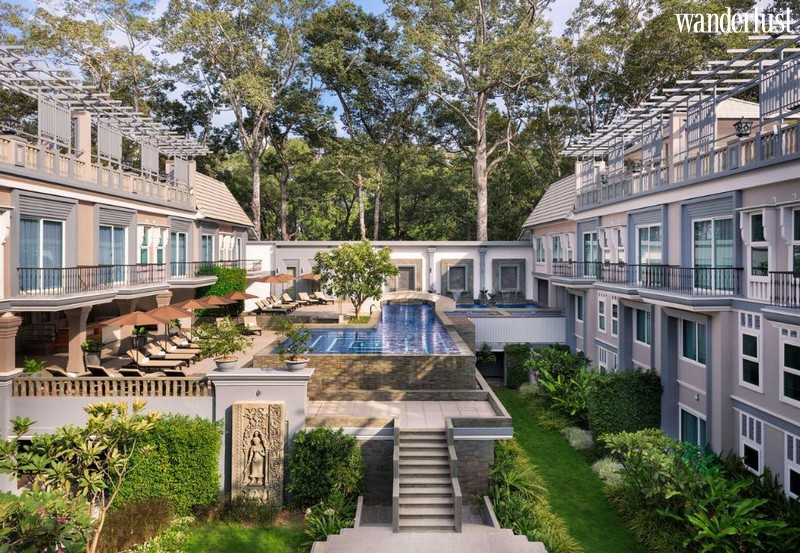
A 5-star hotel with huge rooms that have been gorgeously appointed in wood. Besides excellent service, guests can expect complimentary breakfast and a private balcony area. While all guests have access to the outdoor swimming pool, some rooms even have private outdoor jacuzzis.
Damrei Residence & Spa
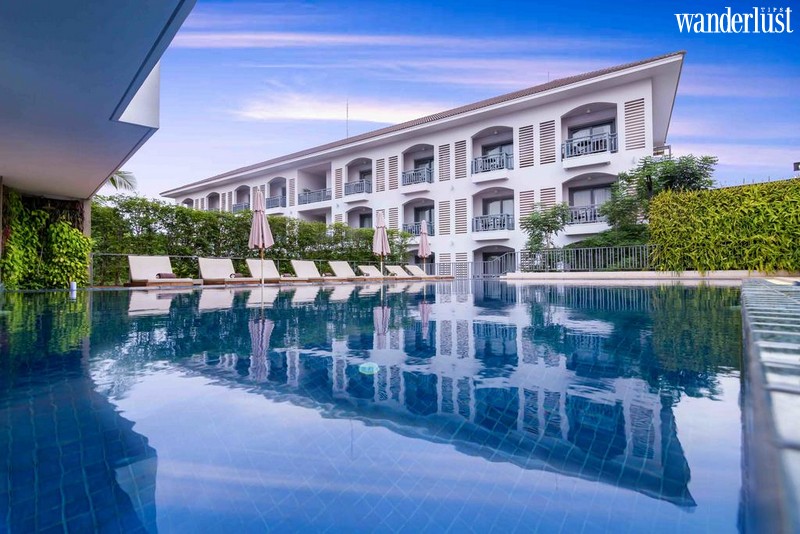
It’s hard to find better value for money than at this surprisingly affordable 5-star hotel. While there is a swimming pool and on-site bar and restaurant, the beautiful and spacious rooms, as well as the staff and breakfast really make it one of the best places for accommodation.
Onederz Siem Reap
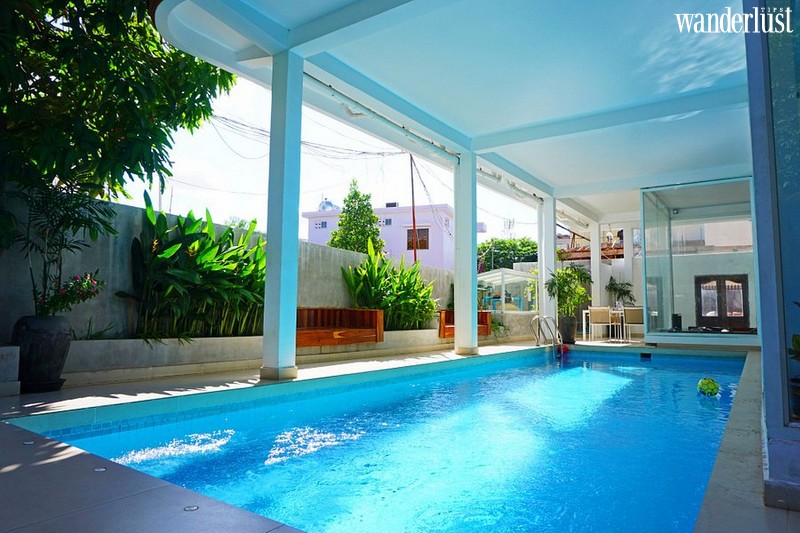
Just a short walk from Pub Street and the center of town, staying at this hostel you’ll be able to enjoy the service from the friendly staff, and the clean, comfortable rooms. Not to mention the awesome rooftop pool where you can watch the spectacular sunset.
BEST PLACES TO VISIT
Angkor Wat
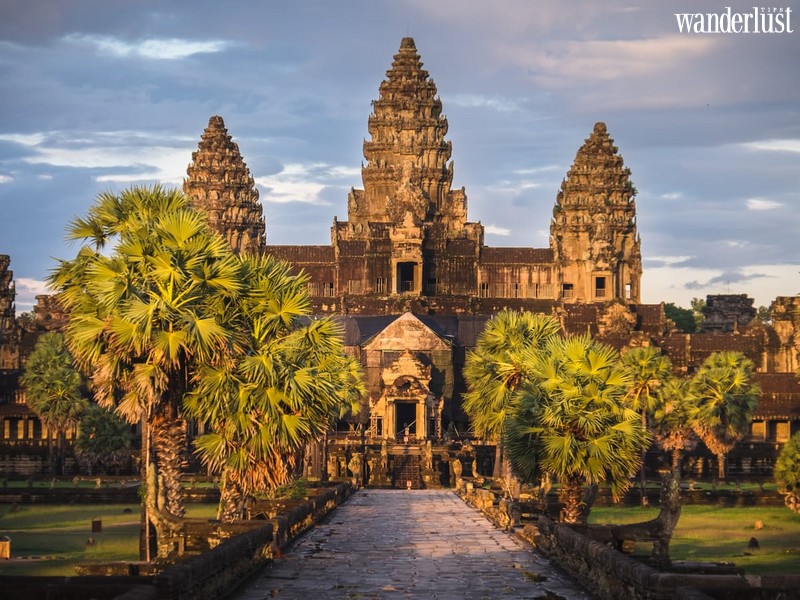
This temple was built by Suryavarman and is considered the biggest Asian pyramid. It is over 200 feet high and divided into several layers. This temple is the largest in the whole complex and is where the historic site gets its name. The central temple complex has 2,600 feet of bas-reliefs.
The Bayon
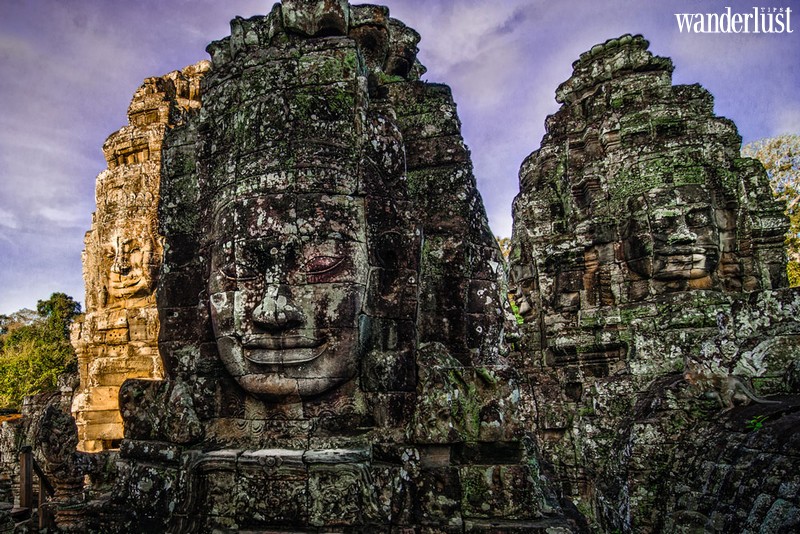
Built by Jayavarman VII, the temple stands in the center of Angkor Thom. With its 54 towers and 216 faces of Avalokiteshvara, this temple looks best in the morning just after sunrise or at the end of the afternoon. The temple was built on 3 levels: the first 2 are rectangular, while the 3rd is circular.
Ta Prohm
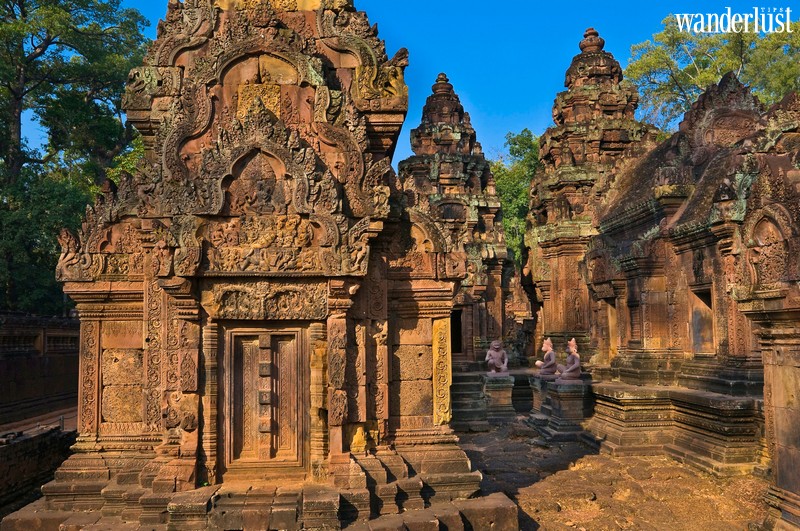
Still covered by the jungle, this place is exactly as they found it. Ta Prohm makes it easy to imagine how the whole complex looked when it was re-discovered in the 19th-century. If you come early, you can avoid the crowds who arrive mid-day. It’s the second-best complex behind Bayon.
Banteay Srei
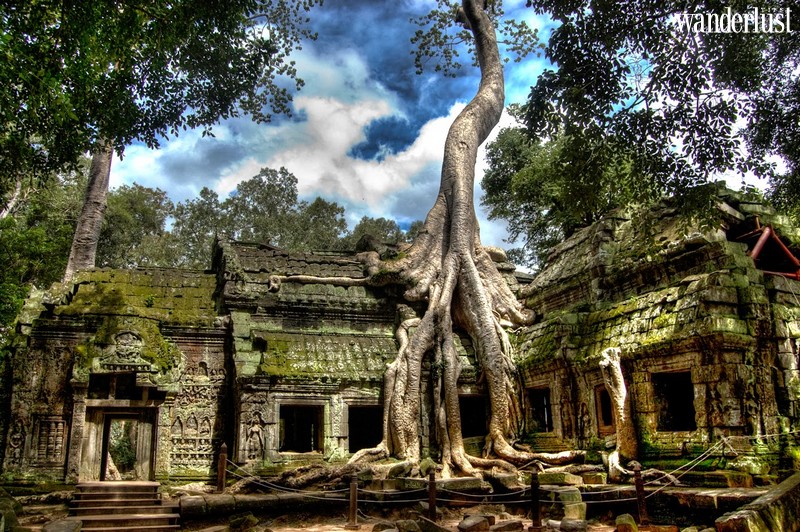
This temple is located about 12 miles north of Angkor. The name means “Citadel of the Women” and refers to the size and delicacy of the decoration. Unlike the major sites at Angkor, this was not a royal temple. There are exquisite decorative carvings in pink sandstone with miniature proportions.
Ta Som
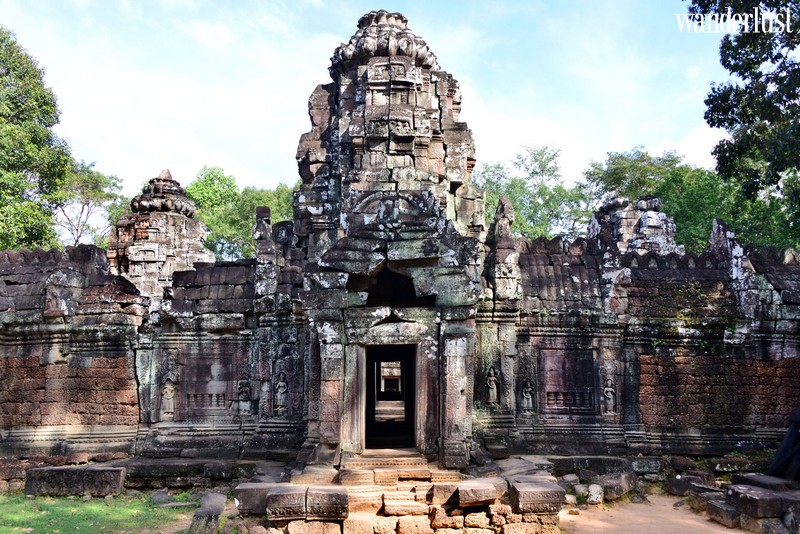
This temple has the same style, structure, and founder as Ta Phrom. It is almost like its little brother. The major feature that sets it apart is a huge tree that grows atop the eastern Gopura. It is slowly destroying the building, but it makes for amazing photo opportunities.
WHAT TO EAT
Bai Sach Chrouk
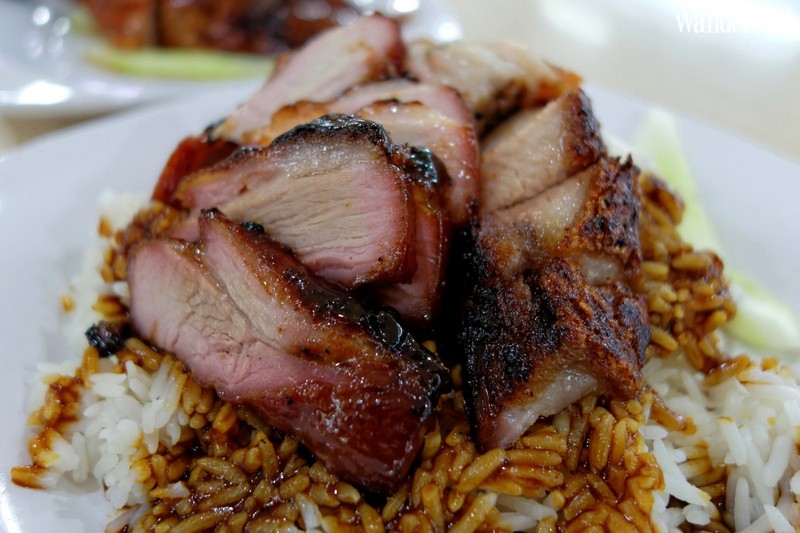
Bai Sach Chrouk is sold by roadside food stalls and local markets in downtown Siem Reap for less than US$1. This simple yet popular Cambodian breakfast staple comprises juicy pork slices, scrambled eggs, and rice.
While the dish typically calls for raw pork that’s slow-cooked over a charcoal stove, there are several Khmer restaurants that marinate the meat with coconut milk or garlic for added flavor.
Once it’s cooked, the pork is thinly sliced and arranged atop a bowl of broken rice, sliced scrambled eggs, pickled cucumbers, and daikon radish. A bowl of chicken broth, scallions, and fried onions are also served together with Bai Sach Chrouk.
Fish Amok
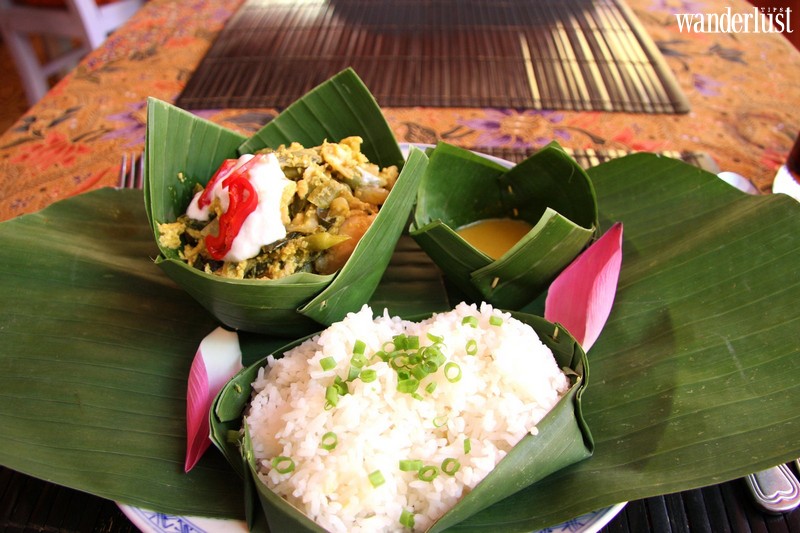
Fish amok is a freshwater fish fillet that’s steamed with curry and banana leaves, resulting in a soft mousse-like texture. Unlike most curries in Asia, it exudes a fragrant flavor rather than a spicy one due to the combination of coconut milk and kroeung, a Khmer-style curry paste that contains garlic, lemongrass, turmeric root, Chinese ginger, kaffir lime, shallots, and galangal.
Fish amok is traditionally eaten during the Water Festival, but travelers can enjoy this classic dish (with a big plate of rice) any time of the day at local restaurants in Siem Reap.
Lok Lak (Stir-Fried Beef)
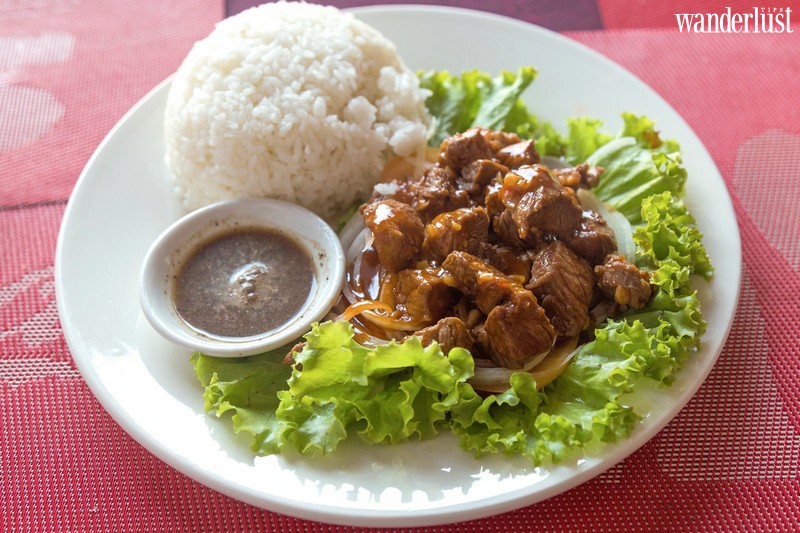
Lok lak or stir-fried beef varies from one cook to another, but it’s usually accompanied by fresh lettuce, tomato, red onion, and cucumber slices. To produce its distinctive flavor, the meat is marinated overnight with a unique combination of fish sauce, soy sauce, lemon, pepper, and oyster sauce.
If you’re not a fan of beef, most restaurants can easily substitute it with venison, pork, chicken or even tofu. As with most local dishes in Siem Reap, Lok Lak is served with rice, fried egg, tangy brown sauce, and a side of fresh lettuce leaves.
Prahok Ktiss (Pork Dipping Sauce)

Prahok Ktiss is a traditional condiment in Siem Reap which uses fermented fish paste as its main ingredient. While most prahok-based dishes have a very strong, pungent flavor, this dipping sauce is palatable to most visitors thanks to the addition of sliced pork belly or minced pork, eggplant, coconut milk, and kroeung (Khmer curry paste).
Served with plenty of freshly sliced vegetables such as carrot, cabbage, cucumber, and long beans, prahok Ktiss is typically enjoyed as a snack or side dish to noodles or rice.
BEST THINGS TO DO
Admire the majestic beauty of the Angkor temples
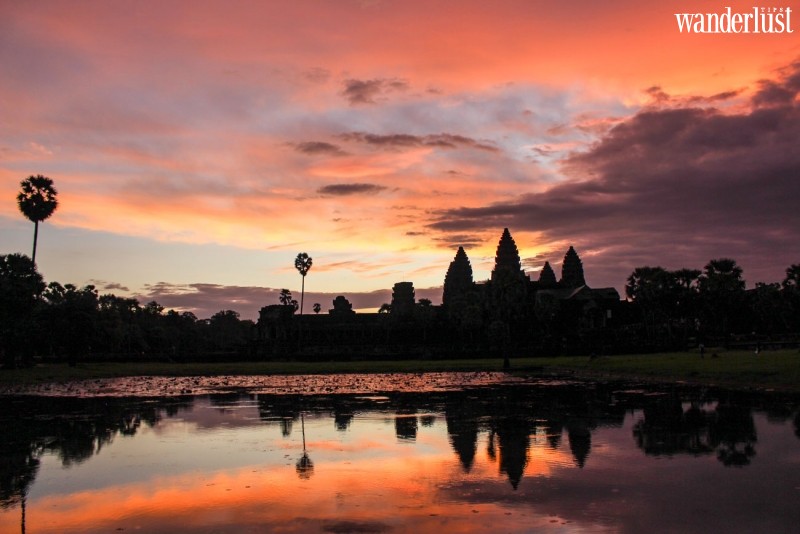
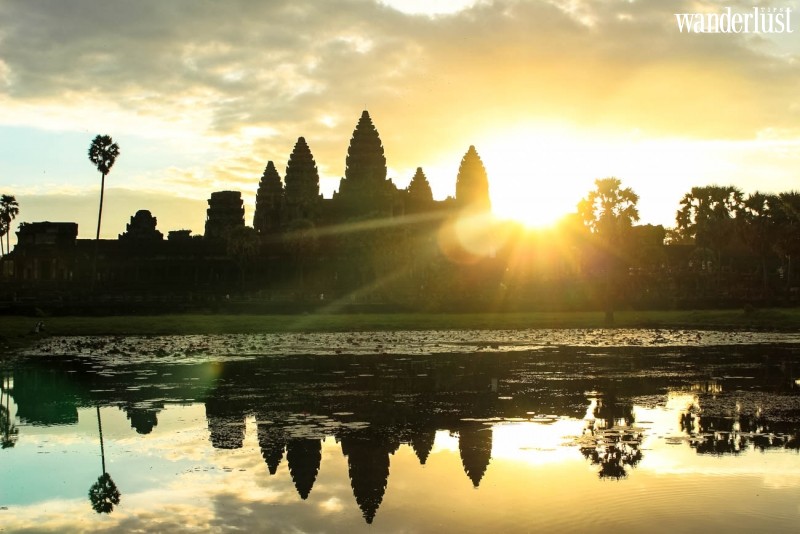
Begin your trip with a visit to the enigmatically iconic Angkor complex. Despite many other things to do in Siem Reap, a visit to the Angkor temples is still priority number one. And a full day at Angkor absolutely doesn’t disappoint. Spread over at least 390 square miles, this massive complex is considered the world’s largest religious monument.
Once inside, you can find many beautiful towers and artwork with the classical style of Khmer architecture, which makes it a popular tourist site. The best time for photography is sunrise at Angkor Wat, so you should plan to go early and be sure to make it to Bakan Sanctuary – the temple-top viewing area closing at 5h30 pm. Because the scale of Angkor Wat is overwhelming, plan at least half a day to explore the whole complex.
Pay a visit to the Landmine Museum
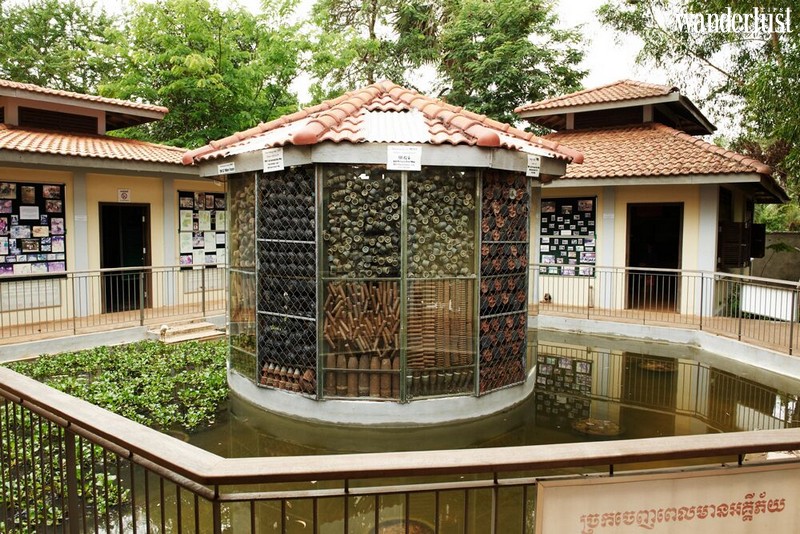
About 25 km north of Siem Reap, The Landmine Museum is a perfect choice for those who want to learn more about Cambodian history. The museum was founded by a former child soldier whose parents were killed by the Khmer Rouge. It houses a unique collection of landmines and tanks, which have been left behind by more than two decades of conflict. In the present day, there are still 4-6 million pieces of unexploded landmines and remnants of war – left in the ground here.
The entrance fee of $5 is to help victims affected by landmines. You can book guide tours every Monday, Tuesday, Thursday, and Friday from 9 am to 3 pm, in English and Japanese.
See Authentic Life at Kampong Phluk floating village
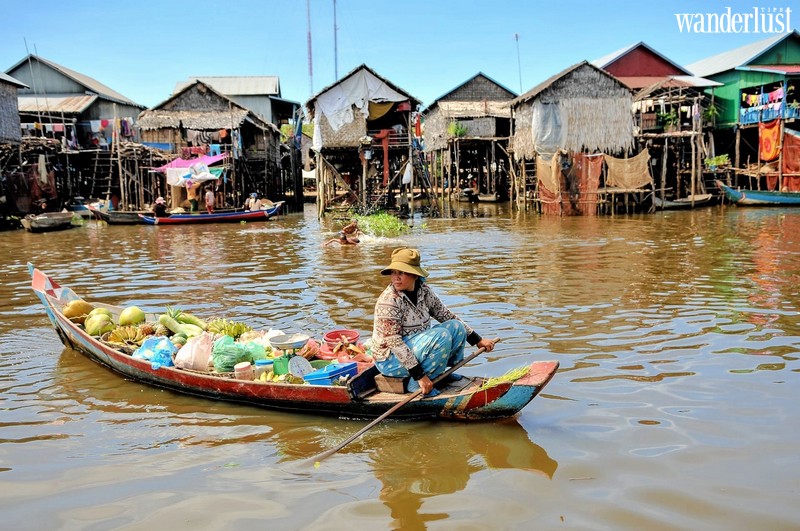
If you want to escape from the touristy Siem Reap, then head to one of the nearby floating villages for a touch of authentic local life. About 16 km southeast of Siem Reap, Kampong Phluk is a fishing village built on stilts around Tonle Sap, Cambodia’s largest lake. Till now, only a few tourists have made the journey to Kampong Phluk, which helps the village retain much of its authenticity. While visiting, you’ll see what a traditional fisherman’s life is like over water. They are busy doing laundry, cooking, or fishing on the wooden boats. The only way to reach the village is by boat with the price of $18 per person.
Wander through the Angkor National Museum
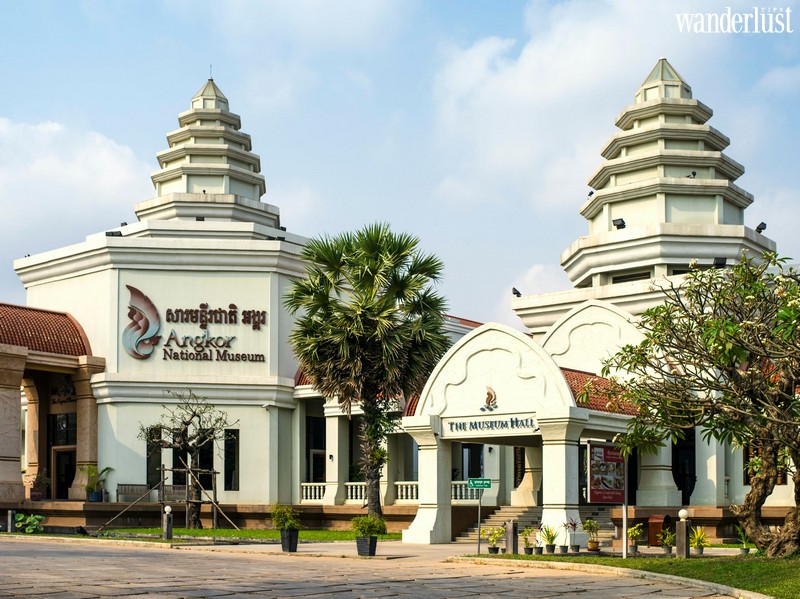
Opened in 2007, the Angkor National Museum is considered “the jewel” of Cambodia, as it is home to a comprehensive collection of relics from the ancient Angkor Empire. The highlight of the museum is a gallery of 1000 Buddha images and hundreds of sculptures of wood, jade, and metal. All are put together to tell a coherent narrative of the Angkor Empire’s beginning and eventual downfall.
When you’re done visiting, stop by the Museum mall along the northern side of the museum. There is a variety of locally-made silks, lotus fiber cloth, and lacquerware that you can buy to take back a little part of Angkor.
Eat bugs at the Old Market
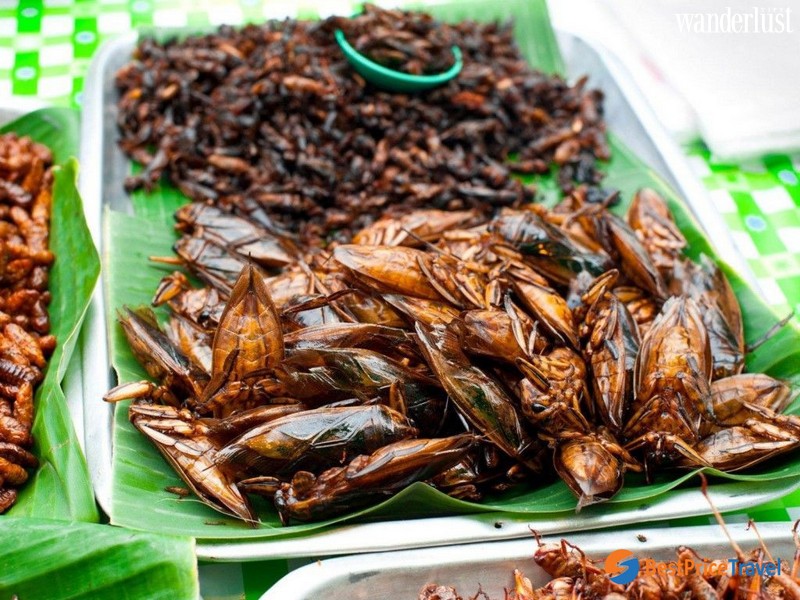
Opening Hours: Daily 7 am – 8 pm
Locally known as Psah Chas, the Old Market is the oldest Khmer market in Siem Reap, where you can get a feel for a real Cambodian market. Most of the locals come here to shop for a wide array of fresh vegetables, seafood, meat, and household items. There’s also a number of stalls located close to the entrance that offers traditional souvenirs like silverworks, T-shirts, sculptures, jewelry, handbags, and art…
Wanderlust Tips

